Editor’s note: TL;DR I’m starting a new brand design studio with my friend Matt. You can jump to the end if you just want the coordinates. Or you can enjoy the denial and reward of reading about it for a few minutes before the reveal. ;)
Proximity increases the chance for serendipity
Like most of my early 2000’s and 2010’s web friendships (“dotcomrades” I used to call them), I have no real recollection of how I met my friend Matt Yow.
Our first in-person interactions happened when I tried hard to recruit him to the in-house non-profit design team I was building in 2014 (it didn’t work). I cheered him on as he launched his first independent design studio Twin Forrest later that year. And I’ve followed along in his career as he’s brought his rigorous, thoughtful design approach to tech companies, startups, and agencies. We’d chat up side projects that never materialized, or talk shop on metal records, books, and baseball.
Ivan Chermayeff once said, “I think most designers are self-indulgent, illiterate…a fashion-mongering bunch of people who cannot speak on any subject except their own.” and boy howdy was Ivan right. But I’ve always loved that Matt was a designer who loved to read on a variety of subjects, and loved to write about his process, and it showed in his work. We’ve had this mutual (I hope!) admiration society thing going for more than a decade. So why am I writing about him in today’s newsletter? Because a few weeks ago he tweeted “alright who wants to start a design studio together?”
And I took him up on the offer.
The definition of insanity
I haven’t exactly been quiet about my thoughts on the design world this year (see: Designing Through the Sea Change). The current landscape is a perfect combo of economic, social, technological, and cultural things that have coalesced to force the industry, and specifically the freelance portion of that industry, to reevaluate business as usual and the future. For my part, I could keep doing what I’ve been doing the last seven years of independent designing (which has been fine!), but expecting a different outcome than I’ve been getting isn’t logical. To get something new, I have to do something new.
A trusted advisor recently challenged me to either fully commit to the short-term brand sprint model I’ve been toying with or “an operating model that is higher velocity”. This idea of velocity has helped me figure out what I want to build and do, and why I want to make sure all of that building and doing isn’t solo. Whatever the future of design looks like, I’m convinced it’s multiplayer. I’m choosing community.
The definition of velocity
There’s a loud narrative about speed in design circles lately. We’ve got dozens of subscription services where customers pay a flat monthly fee for “unlimited design requests” turned around in a few business days. We’ve got studios and agencies experimenting with (or completely focusing on) brand sprint offerings1 where full identity packages are delivered to startups in a week. Heck, I’ve been running LogoLand2 for a few years now, delivering logos in a business week.
It’s speedsters all the way down.
Now you can make the argument subscription design services are rebranded agency retainers, or brand sprints are hyper-streamlined identity projects, but it’s more than just marketing speak — speed is the vital selling point of these models, and the people buying these services obviously value it.
I have a different approach, which has created friction even in my own design practice as I experiment with different offerings. I view speed as a tool of the design process, an important tool, but not the primary one. I’ve always been more of a “slow is smooth; smooth is fast” kind of guy. And so has Matt. We have the ability to do a lot with a little in a short timeframe. We believe speed absolutely has its place in our process. We’re just not convinced it should be in first place. Not if we want to build foundational things with enduring value for our clients.
This is where velocity comes in. Velocity is speed combined with direction; a change in position divided by the time of travel. So yes to speed, but speed in service of what? Speed is a tactic, not a mission. What kind of thing do we want to build?
Start with the words, not the pictures
Being designers who write changes your process and approach. We set off on this journey together in text messages, videos chats, and Google Docs, not visuals. “You got name ideas?” he asked early on, and I smirked, because of course I did and I also had a list of potential domains. “What about Warm Intros… or just… Warm? Clean. One word, packed with meaning. Real human stuff.” We agreed to marinate on it over the weekend.
I sent Matt a sketch on Saturday, a messy list of adjectives — “Warm makes things that are…” — that could serve as guiding voices shaping an identity, website, and studio approach. “Love this. Immaculate list.”
I got a domain receipt screenshot on Sunday afternoon. “Day 1.”
World, meet Warm
Warm is a new brand design studio. We make identities, websites, publications, and more. We make things that are thoughtful, artful, foundational, smart, expansive, cohesive, opinionated, fun, human, sturdy, storied, textured, well-edited, and well-crafted3.
If you like things like that, we’d probably enjoy making them with you, too.
We’re excited to work with startups, small businesses, non-profits, and the like. We’re open to working alongside other studios and agencies to pitch in where they need help. Ultimately we just want to make things together, and are looking for new opportunities to do that. We’re not opposed to brand sprints, or moving fast and breaking things — but I have a sneaky suspicion speed for the sake of speed is at odds with making things like our list of adjectives. We’re aiming for something a little less cold, robotic process, and a little more, well, warm.
If that resonates, we’d love to hear from you.
Website: warm.design
Email: get@warm.design
Twitter: warmdotdesign
Instagram: warmdotdesign
Substack: warmdotdesign
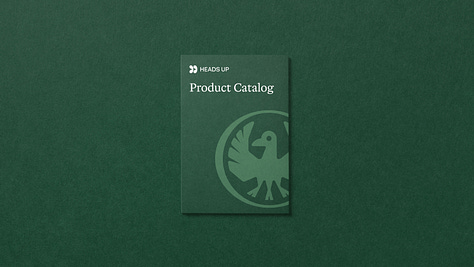
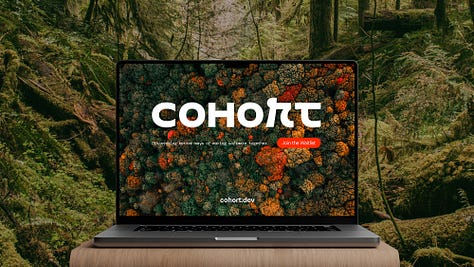
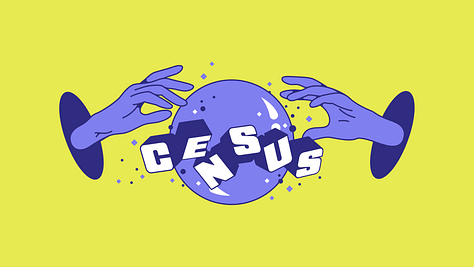
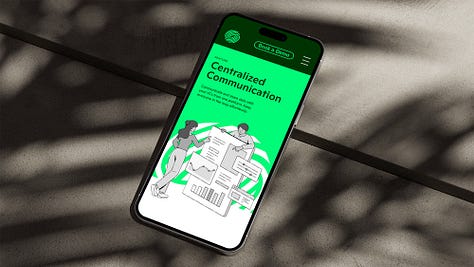
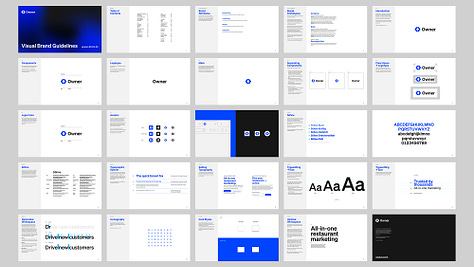
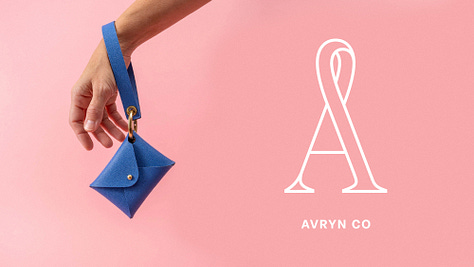
Warm is open for business. Tell all your friends!
FWIW Nick Pattinson’s Primary is the best of the bunch I’ve seen for brand sprints — super clear offering, great operating model, and solid work. If I was a startup that valued speed and wanted high quality, I’d definitely give them a call.
As a part of figuring out various aspects of my design practice this year, I’ve lowered the price and delivery time of LogoLand to $999 in five business days. We’ll see what happens there, or if AI has truly eaten the bottom of the market.
This final copy from the website is remarkably similar to the initial messy adjective sketch I sent Matt. When you know, you know.





